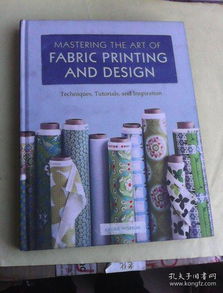Content:
Fishing is an ancient activity that has been enjoyed by people for centuries. Whether you are a beginner or an experienced angler, there is always something new to learn. In this article, we will explore various fishing techniques and methods to help you improve your skills and have a more enjoyable and successful fishing experience.
Choosing the Right Equipment
The first step in mastering the art of fishing is to ensure that you have the right equipment. Here are some essential items you should consider:
a. Rod and reel: The rod and reel combination you choose should be appropriate for the type of fishing you plan to do. For instance, a spinning reel is ideal for light tackle fishing, while a baitcasting reel is better for heavier lures.
b. Line: The type of line you use will depend on the fish you are targeting. Monofilament line is the most common, while fluorocarbon line is often preferred for its invisibility and strength.
c. Lures and bait: The types of lures and bait you use will depend on the fish species you are targeting. It is essential to research the local fish population and choose the appropriate lures or bait.
Learning the Basics of Casting
Casting is a fundamental skill in fishing, and mastering it will improve your chances of catching fish. Here are some tips to help you improve your casting technique:
a. Hold the rod with a comfortable grip: Place your index finger on the reel and the rest of your fingers on the handle.
b. Use a smooth, fluid motion: Start with a slow, gentle backcast, followed by a forward cast. Practice casting in a straight line and at various distances.
c. Adjust your casting technique based on the wind: Wind can affect your casting, so it is essential to learn how to cast into the wind and against it.
Choosing the Right Location
To increase your chances of catching fish, it is crucial to choose the right location. Here are some tips to help you find the best spot:
a. Research the area: Before heading out, research the local fish population and their preferred habitats. This information can help you choose the best location.
b. Observe the environment: Look for signs of fish activity, such as surface disturbance, bubbles, or fish jumping. These can indicate that fish are nearby.
c. Be patient: Finding the perfect spot may take some time. Be patient and explore different areas until you find the one that works best for you.
Understanding Fish Behavior
Understanding the behavior of the fish you are targeting is essential for successful fishing. Here are some tips to help you understand fish behavior:
a. Study the fish species: Research the habits, feeding patterns, and preferred habitats of the fish you are targeting.
b. Adapt your technique: Once you understand the behavior of the fish, you can adapt your technique to match their preferences.
c. Pay attention to the weather: Weather conditions can significantly impact fish behavior. For instance, fish may be more active during overcast days or during the early morning or evening.
Using the Right Techniques
There are various fishing techniques you can use to catch fish, depending on the species and your personal preference. Here are some popular techniques:
a. Trolling: Trolling involves dragging a lure or bait behind a boat at a slow speed. This technique is effective for catching fish that follow moving objects.
b. Casting: Casting is the most common fishing technique and involves throwing a lure or bait into the water. This technique is versatile and can be used in various situations.
c. Still fishing: Still fishing involves casting a lure or bait and waiting for a fish to bite. This technique requires patience and is often used in areas with a lot of fish activity.
Improving Your Hooking Technique
Hooking a fish is an essential skill in fishing. Here are some tips to help you improve your hooking technique:
a. Use the right hook size: The size of the hook should match the size of the bait or lure you are using.
b. Present the bait correctly: Ensure that the bait is presented in a natural and lifelike manner.

c. Set the hook quickly: Once you feel a bite, set the hook quickly and firmly to secure the fish.
In conclusion, mastering the art of fishing requires practice, patience, and a willingness to learn. By following these techniques and methods, you can improve your skills and have a more enjoyable and successful fishing experience. Happy fishing!












